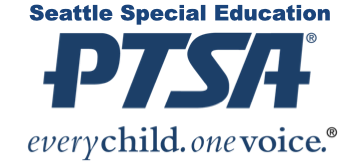Hello,
For the record, my name is Jana Parker. I am a parent of students with disabilities, an immigrant, a person with disabilities, and president of Seattle Special Education PTSA. I work directly with families as an advocate.
I want to briefly express concern that only 30 minutes is given to public testimony with a 3-minute limit for each speaker, at a time when a lot of us are at work and without ASL interpretation as an embedded accommodation.
I appreciated the presentation by WEA today and their work. We heard the mention of “Behavioral classroom” and “Autism classroom” and the ongoing reminders that “students are general education students first”.
Regarding an inclusive mindset and shift, we need to change the language we use every day. Our students are just students, and some of them have disabilities and some of them receive special education services. Their identity is important, and we should not be othering them as “special education students” even if it means that it is a mouth full to say [students with disabilities receiving special education services].
Some questions and concerns that we have, not just related to today’s presentation.
- How prepared are new teachers to co-teach when they exit preservice?
Far too often we experience educators general education teachers thinking that it is not their responsibility to provide support in their classroom. - Many teachers tend to rely on special education staff.
- When case managers are drafting a student’s IEP, they tend to be on autopilot more often than not, associating special education services with the designation of students to special education pathways that are synonyms of a classroom.
We all know that special education is a service and not a place, in theory, but the segregation of students based on the level of their disability needs continues. Often this determination is made before the IEP team even discusses IEP goals and services needed for the student to learn and succeed in their natural learning environment.
- How are school districts with inclusionary programs incentivized and required to use inclusionary practices?
- What is being done in school districts that welcome new teachers without segregating disabled students?
- BIPOC families understandably, are afraid of segregation if their students are identified as students with a disability. How do we address inclusion so that students can receive the support they need?
- Until we eliminate practices of normalized segregation based on disability I don’t see how we could address the racism in schools and eliminate over-identification of BIPOC students if we continue being compliant with the approval of segregation as the norm.
This is an old issue that we need to sort out with careful planning, where in teacher education this systemic discrimination gets addressed, so that it can be systematically eliminated.
Thank you.
